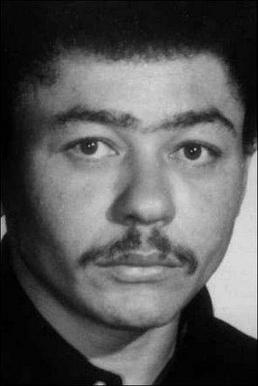Marcus and Louise's relationship starts out as a method of revenge for both of them. Marcus wants revenge on Bonbon for working him half to death and for loving Pauline, thus causing her to ignore him. Marcus decides that to get back at Bonbon he will seduce Louise. Louise wants revenge on Bonbon because he shows more love and affection for Pauline and their two children than he shows her and Tite. Louise continually tries to seduce various men in the quarters, but no one takes her bait until Marcus looks up at the gallery following Pauline's continued rebuffs of his advances.
Gaines has said that he struggles with writing from the omniscient point of view, and to that point, only two of his works use that point of view: Catherine Carmier and In My Father's House. Instead, the first person point of view comes easier to him, and when talking about Of Love and Dust, he mentions that F. Scott Fitzgerald's deployment of it in The Great Gatsby by having Nick Carraway as the narrator served as a model for James Kelly in his own novel. During the unpublished speech mentioned above, Gaines talks about the first person narration in the novel and about the process of writing. He tells his audience that because he could not see inside of Marcus's and Louise's heads, he does not know what caused them to change their minds about one another. Instead, all he knows is that they did. Rather than just seeking revenge, as they initially set out to do, the two fall in love.
But when my two revenge seekers come together, something else happens to them instead. I don't know exactly what caused it. I suppose if I had written the novel from the omnicient [sic] point of view--that is, if I had followed my characters every where they went--even to the bed room, even to the bed--I would be able to explain to you whey they changed so. But since I told the story from another character's point of view, and since he was not allowed to enter the bedroom, he was unable to tell us, both you, the reader, and me, the author, how such a drastic change between my two young characters came about. But I do know this for a fact that after they had been with each other a while, instead of seeking revenge on the other man who had been forced by this society to hurt both of them, they fell in love and made plans to escape from South to North. That is a drastic change, I would admit, from their previous intentions; but nothing more drastic than my overseer's change of hear for the Black woman [Pauline] or the Black woman's change of heart toward my overseer. (5-6)This quote is interesting for a couple of reasons. For one, it gives us insight into Gaines as a writer and the way that a work of fiction comes into being. He states that he cannot exactly explain why the two fall in love, they just do. Because Aunt Margaret can't see into the bedroom, she does not know what occurs within. All she knows is that she hears loud noises then nothing. Even when the door opens, she only sees feet and naked bodies, nothing more. The path to love for Marcus and Louise is not spelled out for Gaines because he does not delve into their minds; he remains outside looking in, from the community's perspective. Likewise, the reader does not know what happens either because all of the information we get is from Margaret or others in the quarters.
In many ways, the scenes where Aunt Margaret hears Marcus and Louise in the bedroom recall Nick's leaving Daisy and Gatsby alone to reconnect. Unlike Aunt Margaret, Nick does not hear the conversation; he just "walk[s] out the back way . . . and [runs] for a huge black knotted tree" and stands there while the two lovers talk within his house (93). When Nick returns, Daisy and Gatsby do not notice him at first; they sit on opposite ends of the couch stare at one another "as if some question had been asked or was in the air" (94). Nick notes that Gatsby looks different, glowing, and the trio make their way next door to Gatsby's mansion.
The narrative point of view in both novels provides us, as readers, with implied explanations for what occurs. What exactly do Marcus and Louise talk about after they make love? Does the act resemble, as it did in my head, the scene in Invisible Man where IM has sex with the white woman then shames her by writing on her body in lipstick? Or, is it like the scene between Madge and Bob in Chester Himes's If He Hollers Let Him Go when Madge tries to get Bob to "rape" her? The sounds Aunt Margaret hears makes me think of these scenes, but I cannot say for sure that anything like the scenes described above happened. What do Louise and Marcus talk about before he jumps out of the window and heads back down the quarter? All Gaines knows, and I know, is that they fall in love. How that happens, we can only speculate. What that says though, it what Gaines's speech resonates with: love is the answer to the problems we experience. Possibly I will write about the rest of Gaines's speech at another point. As for now, what do you think about Gaines not letting us see how Marcus and Louise change their opinions and fall in love? What are some other novels that are similar in this manner?
Fitzgerald, F. Scott. The Great Gatsby. New York: Scribner, 1995. Print.
Gaines, Ernest J. Of Love and Dust. New York: W. W. Norton & Company, 1979. Print.








.jpg)
